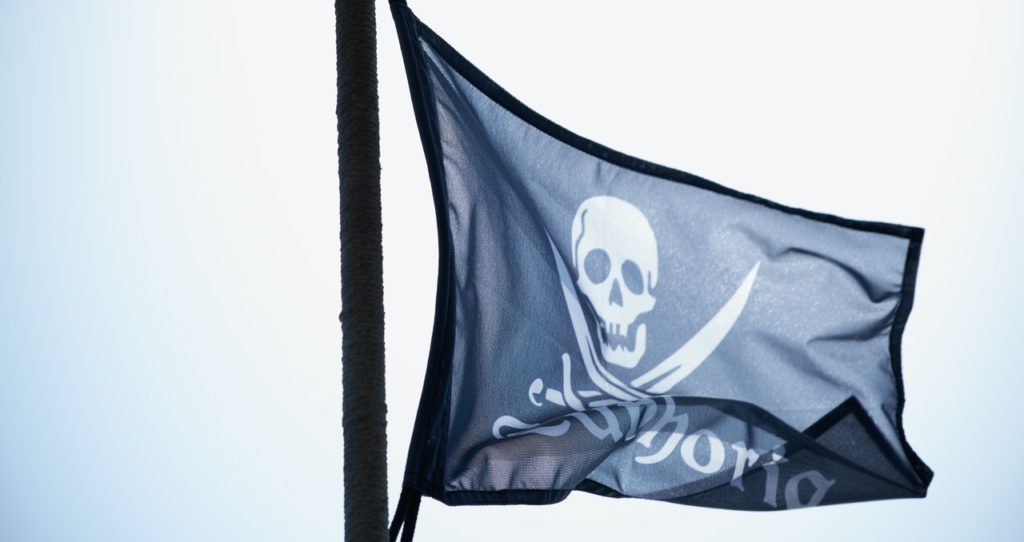
M&E Journal: No Laughing Matter: Comedy is the Top of the Bill for Pirates
High-profile events always attract uninvited guests. So with the streaming party in full swing, it is no surprise that gate-crashing pirates are keen to get in on the action.
But, given the spotlight on sports piracy and superhero movies, it might be surprising to find that comedy is the most pirated genre of video.
Perhaps less shocking is that streaming pirates are laughing all the way to the bank as they siphon off billions of dollars rightfully belonging to video providers and content owners.
Our research conducted by Ampere Analysis across Brazil, Germany, India, Italy, Thailand, UK and U.S. examines the financial impact of sport, movie and TV piracy on the entertainment and subscription TV business by analyzing how consumers of illegal content would behave if piracy was blocked at every buying decision.
Put simply, piracy is costing video service providers in the seven surveyed markets over $30 billion in potential revenue per year. And this data is straight from the mouths of the people who steal it.
 THE DEVIL IS IN THE DETAIL
THE DEVIL IS IN THE DETAIL
There have been several surveys on the scale of TV and video piracy using broad-brush extrapolations which calculate how much piracy costs the industry based on the number of pirate viewers.
But this Ampere Analysis survey took a much more targeted and nuanced approach to achieve more accurate predictions.
Examining household demographics for each of 16,000 respondents and delving into what pirate consumers watch — including specific titles in U.S. — the research uncovers what consumers of pirated content would do if they could no longer access illegal streams, and how many would buy services legally based on the availability and cost of specific content in their local market.
So, instead of simply counting the cost of piracy for all users, the survey drills down to uncover the true convertible value if piracy stopped. For example, our sample of 4,000 US users found that 3,211 pirated content, 2,057 pirated sport, and 3,164 movie and entertainment.
Of these, 597 watching pirated sport said they would be prepared to pay legally, with 1,631 illegally watching movies and entertainment willing to do the same.
As well as the immediate revenue derived from a new subscription to a service or channel, the research also takes into account the customer value over years using accurate churn information.
ENTERTAINMENT BEATS SPORTS FOR TOP PIRACY BILLING
The research finds that stopping sports piracy in the seven surveyed markets would create $9.8 billion in new revenues with a further $21.8 billion up for grabs by converting movie and TV pirates to legal services.
And, by measuring the impact of individual movie titles and TV shows on consumers’ interest in signing up, the survey also reveals how piracy of some of the biggest movies robs studios and content creators of long-term value.
Stopping piracy of a single Hollywood major movie release can trigger revenues of between $130 million and $280 million in the U.S. alone, with a super-hero blockbuster like Spider Man: No Way Home leading to potential revenue for a studio streaming service of over $400 million, based on the true annual lifetime value of streaming subscribers.
With a relatively limited volume of top end live sport, most Hollywood studios would not bat an eyelid with the survey findings that entertainment piracy is bigger than sports piracy but exceeding its value by over 300 percent is definitely an eyebrow raiser.
 While most of the noise is around superhero movie piracy, it was surprising to find that half of all pirate viewers stream comedy illegally, driven by titles including Ghostbusters: Afterlife, and “Ted Lasso.”
While most of the noise is around superhero movie piracy, it was surprising to find that half of all pirate viewers stream comedy illegally, driven by titles including Ghostbusters: Afterlife, and “Ted Lasso.”
This is followed by the action and adventure genre, and the crime and thriller category respectively.
The survey uncovers that a greater proportion of viewers using both free and paid for pirated aggregated content are parents with young children, whereas, for live sports, the pirate viewers are more likely to be higher income households.
PIRACY PARTY SPOILERS
The survey provides food for thought on the big issues — namely how to deliver content to the intended audience using the appropriate business model at which price point.
With a massive proliferation and fragmentation in video services, households — even those on much higher incomes – are increasingly looking for more aggregated pirate entertainment services in a bid for a one-stop shop that helps cut costs.
This is especially true for younger, less affluent, and more geographically mobile viewers in 16-25 age bracket who feel alienated by a business model which requires committing to multiple ongoing subscriptions.
Because streaming pirate organizations have no content or rights costs to shoulder, they can offer a super-aggregated illegal premium content service at a winning price point.
And by easily exploiting loopholes in streaming delivery technology, they can steal content directly from a legitimate provider’s CDN, adding insult to injury by having the legal service provider foot the bill to deliver the pirated content to the pirate viewer.
PIRACY – THE UNCOMFORTABLE TRUTH
Pirates have always been in the game to make money, but this doesn’t address why piracy is now so ubiquitous and pirated content so accessible.
The reason: pirates’ methods have advanced considerably since they simply exploited “the analogue hole” and stole content from the HDMI ports of set-top boxes. And the shift to streaming technology, which was never designed with security top of mind, means it is incredibly easy for pirates to exploit streaming technology loopholes to steal, aggregate, sell and deliver content illegally.
beIN’s outspoken battle against beoutQ brought the issue into sharp focus and now it has drifted into the murky realms of cyber-crime.
Just as organizations are proactively protecting their systems against malware, ransomware and other hacks, video operators and content owners needs to work on the assumption that their technology will be compromised.
 THE ULTIMATE PARTY CHECKLIST
THE ULTIMATE PARTY CHECKLIST
For some providers security is merely a compliance or contractual issue but the silver lining is, by taking effective action, it is very much a money-making issue with a huge potential upside.
By accurately pinpointing the true cost of piracy, an operator can calculate clearly how much tackling it is worth to the business and what to invest in, while we continue to ensure we’re delivering the technologies to disable and disrupt piracy to help providers recoup lost income.
As the most successful party planners know, paying close attention to every detail in the run up, during, and after the main event is critical. Having beefy bouncers on the door to throw out undesirables is essential, but it’s vital to keep a very close eye on both your possessions and your boundaries at all times to ensure gatecrashers don’t find other ways in.
Likewise, the most secure OTT service needs to take a multi-faceted and holistic approach to security to stop revenue leakage. From proactive and protective securities such as headend watermarking to track the content across the distribution chain and optimizing CDN security, through to human operational intelligence teams with eagle expert eyes and ears on the ground to track and disrupt pirate hackers.
And with more collaboration across the industry, including working with legislators and law enforcement authorities to gather the evidence required to orchestrate technical and legal takedowns, we’ve got the perfect party bag to keep the streaming party swinging with its invited guests while all gatecrashers are effectively barred
* By Simon Brydon, Senior Director, Security, Sports, M&E, Synamedia *
=============================================
Click here to download the complete .PDF version of this article
Click here to download the entire Winter 2022 M&E Journal
